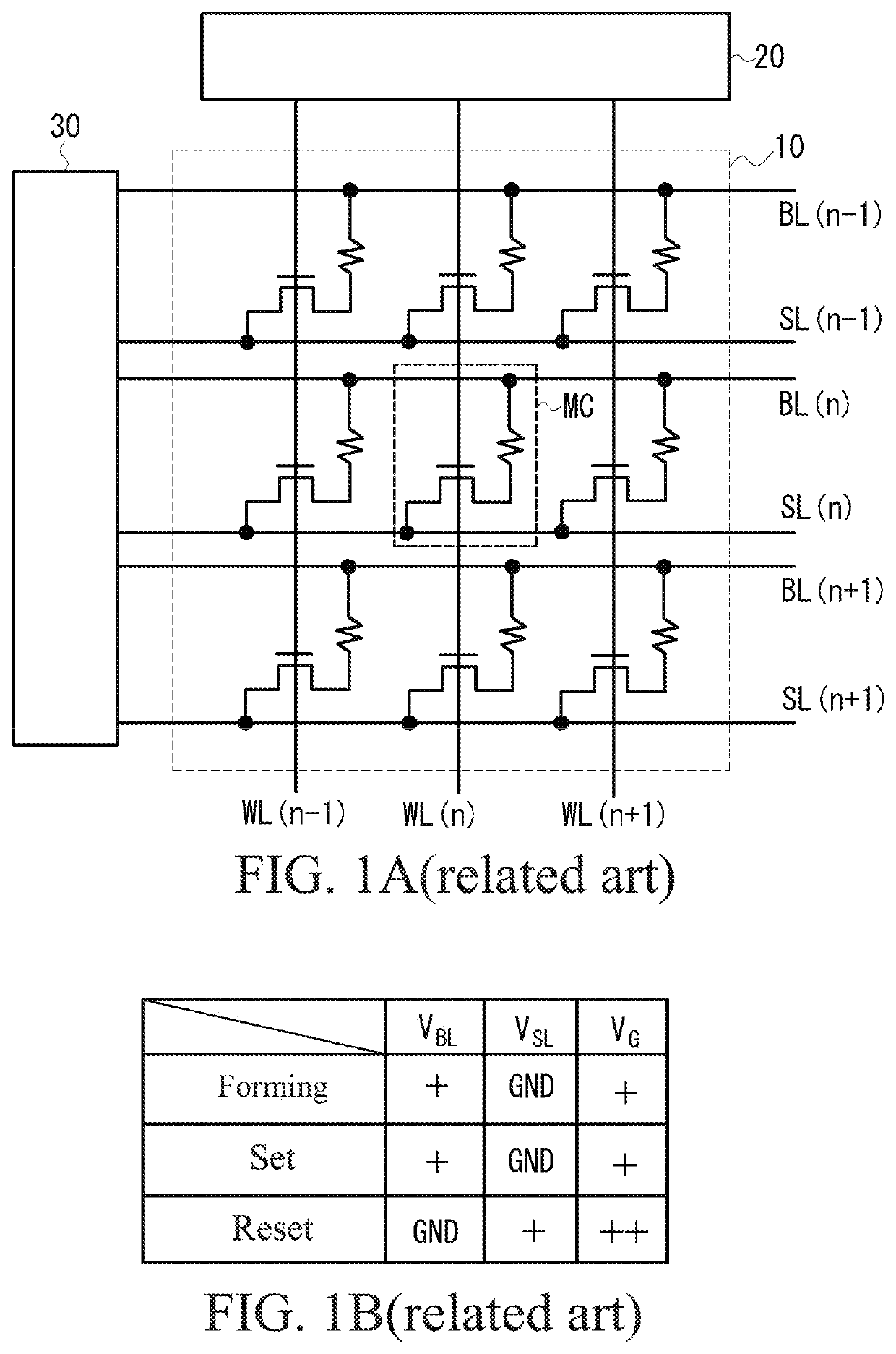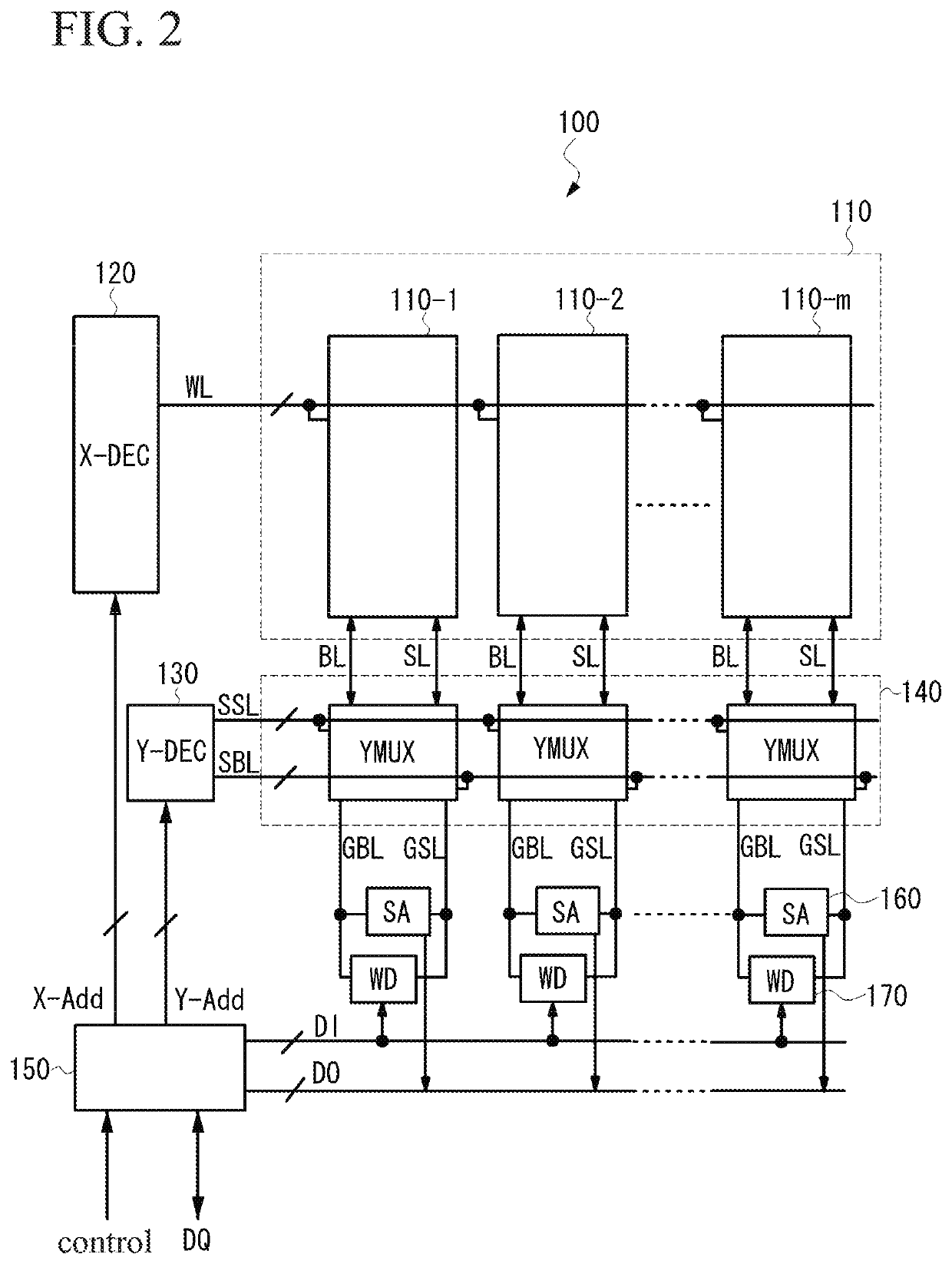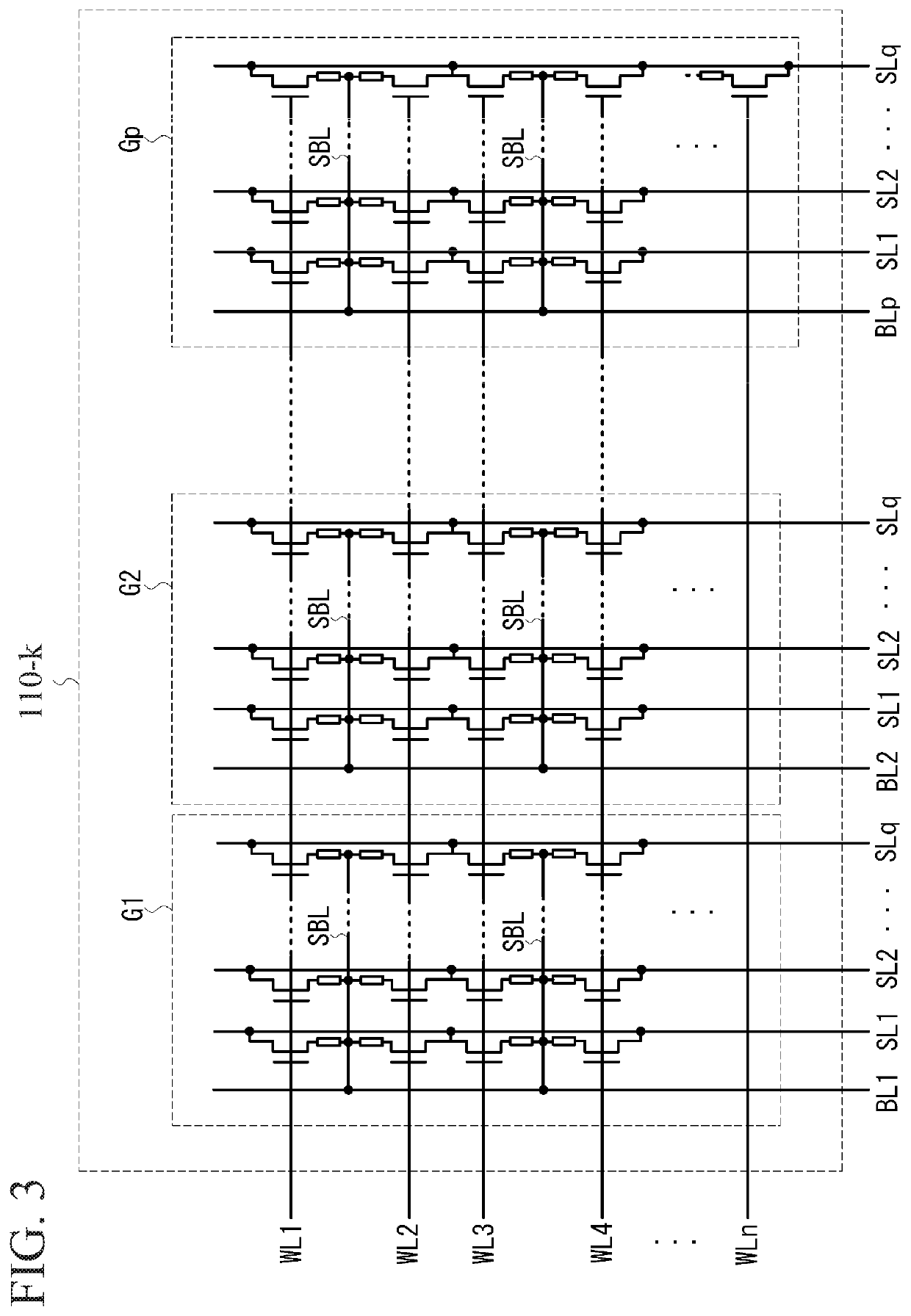Resistive memory
a memory array and resistance element technology, applied in the direction of digital storage, semiconductor/solid-state device details, digital storage, etc., can solve the problems of complex memory array manufacturing and attention-grabbing resistive memories using variable resistance elements, and achieve high reliability
- Summary
- Abstract
- Description
- Claims
- Application Information
AI Technical Summary
Benefits of technology
Problems solved by technology
Method used
Image
Examples
first embodiment
[0048]In the present invention, the memory array 110 has a configuration in which the bit lines are shared. In the following description, the bit lines and the source lines which extend from the column selection circuits 140 to the memory array 110 and are orthogonal to the word lines WL are referred to as the local bit lines BL and the local source lines SL, respectively. A bit line which extends from the local bit line BL and is in parallel with the word lines WL is referred to as a shared bit line SBL.
[0049]In FIG. 3, only the k-th sub-array 110-k of the memory array 110 is shown for example. It should be noted that the other sub-arrays have the same configuration.
[0050]The sub-array 110-k is divided into p groups G1, G2, . . . , Gp in the row direction, and one group comprises memory cells arranged on n rows and q columns. A memory cell comprises an accessing transistor and a variable resistance element coupled to the accessing transistor in series. The variable resistance eleme...
second embodiment
[0083]FIG. 17 is a cross-sectional view (line Y2-Y2) showing a modification of the In the above embodiment, since the local source line is separated from the memory cells which are disposed directly below the local source line, the via contacts V2 / C2 are not formed. In this case, if the via contacts are not formed in a partial area of the memory array, there is a possibility that the dimensional accuracy of the surrounding memory cells is adversely affected. Therefore, in the modification, as shown in FIG. 17, the local source line SL2 is connected to the memory cells, which are disposed below the local source line SL2, through the via contacts V2 / C2 whose size is the same as the memory cells. That is, there is a short circuit formed between the local source line SL2 and the transition metal oxide TMO through the via contacts V2, so that, the formation of the memory cells including the dummy cell can be made uniform. Since there is a short circuit formed between the corresponding b...
PUM
 Login to View More
Login to View More Abstract
Description
Claims
Application Information
 Login to View More
Login to View More - R&D
- Intellectual Property
- Life Sciences
- Materials
- Tech Scout
- Unparalleled Data Quality
- Higher Quality Content
- 60% Fewer Hallucinations
Browse by: Latest US Patents, China's latest patents, Technical Efficacy Thesaurus, Application Domain, Technology Topic, Popular Technical Reports.
© 2025 PatSnap. All rights reserved.Legal|Privacy policy|Modern Slavery Act Transparency Statement|Sitemap|About US| Contact US: help@patsnap.com



